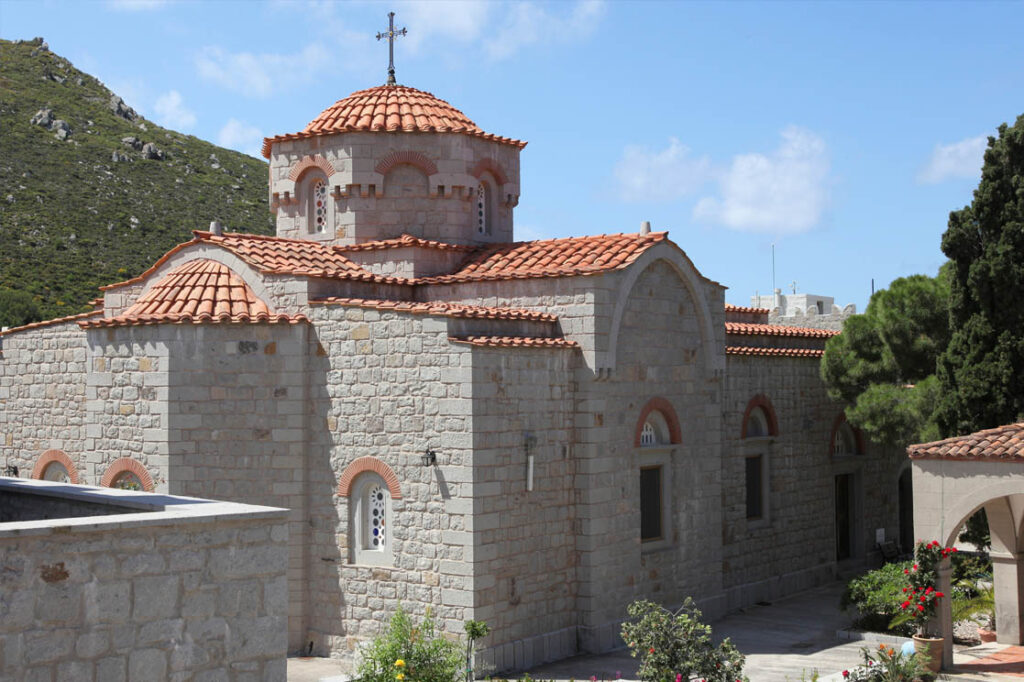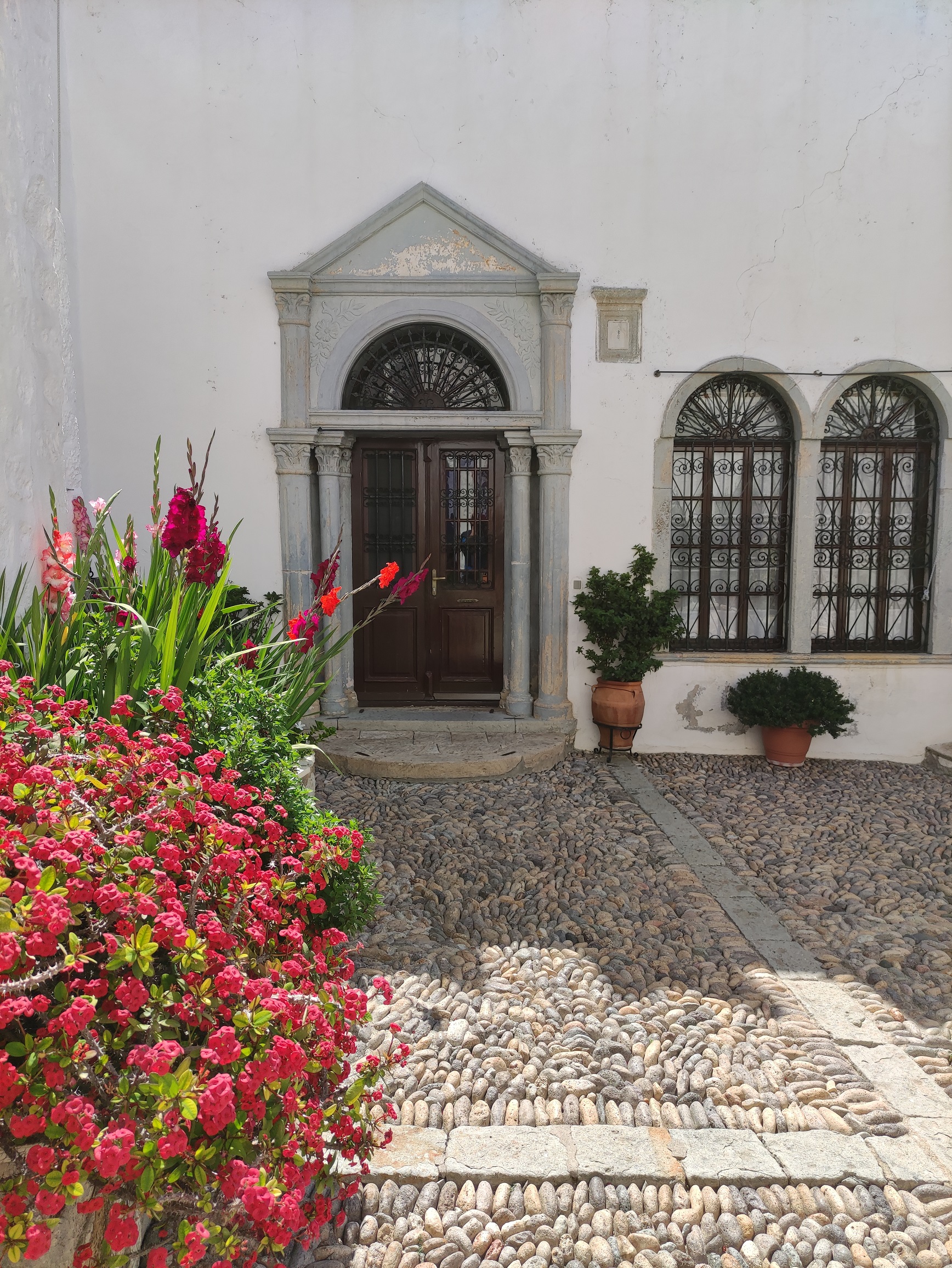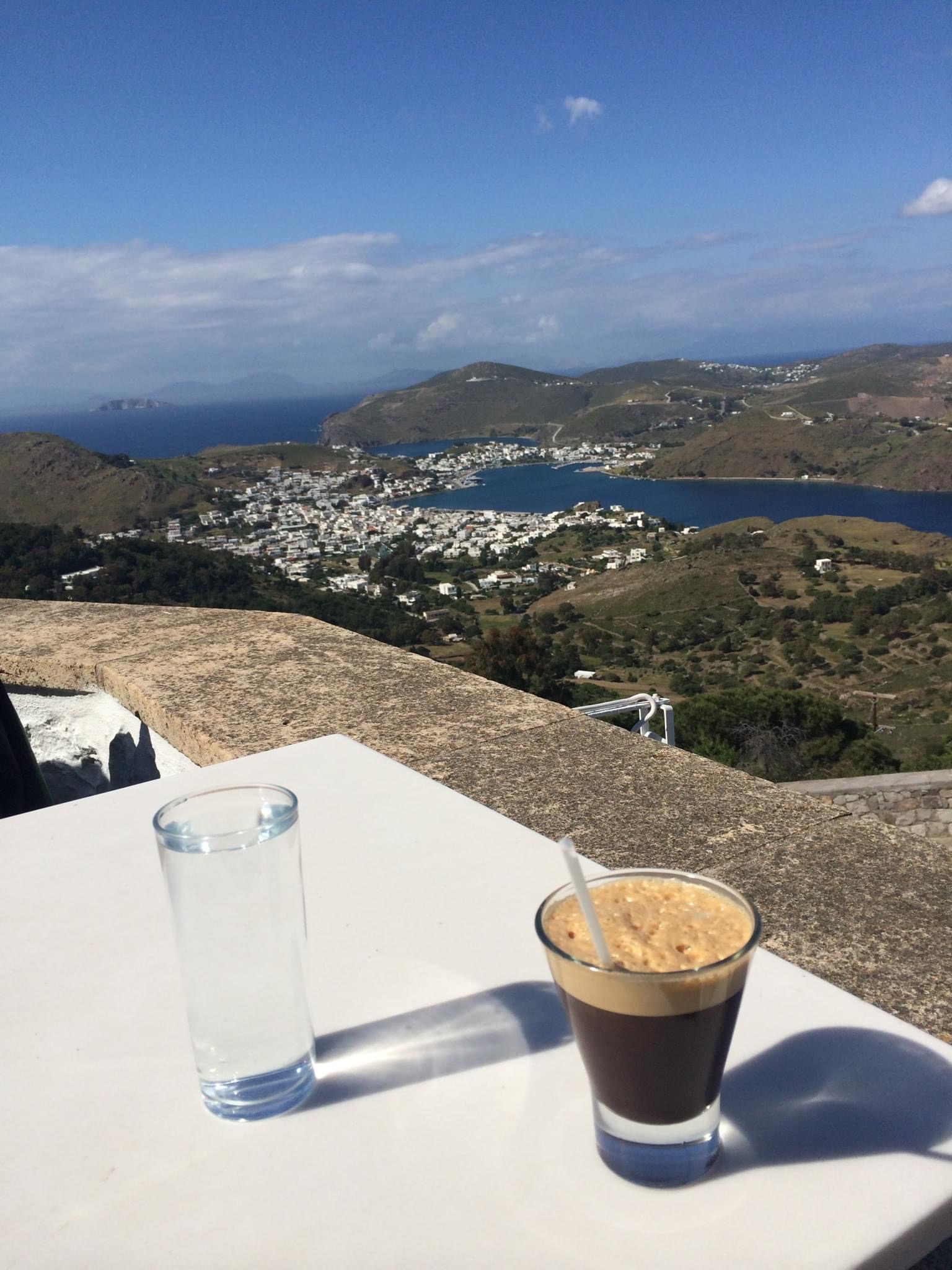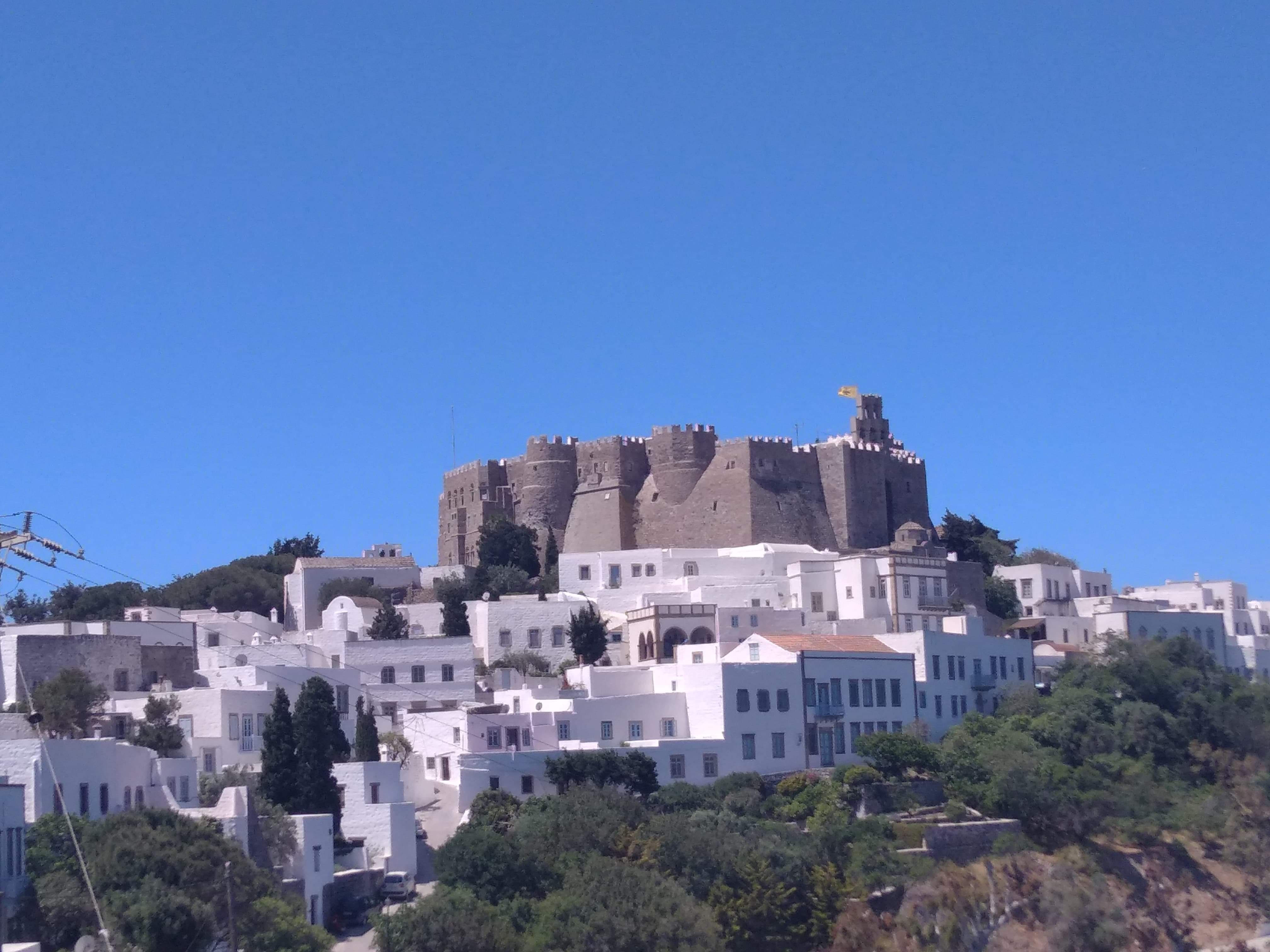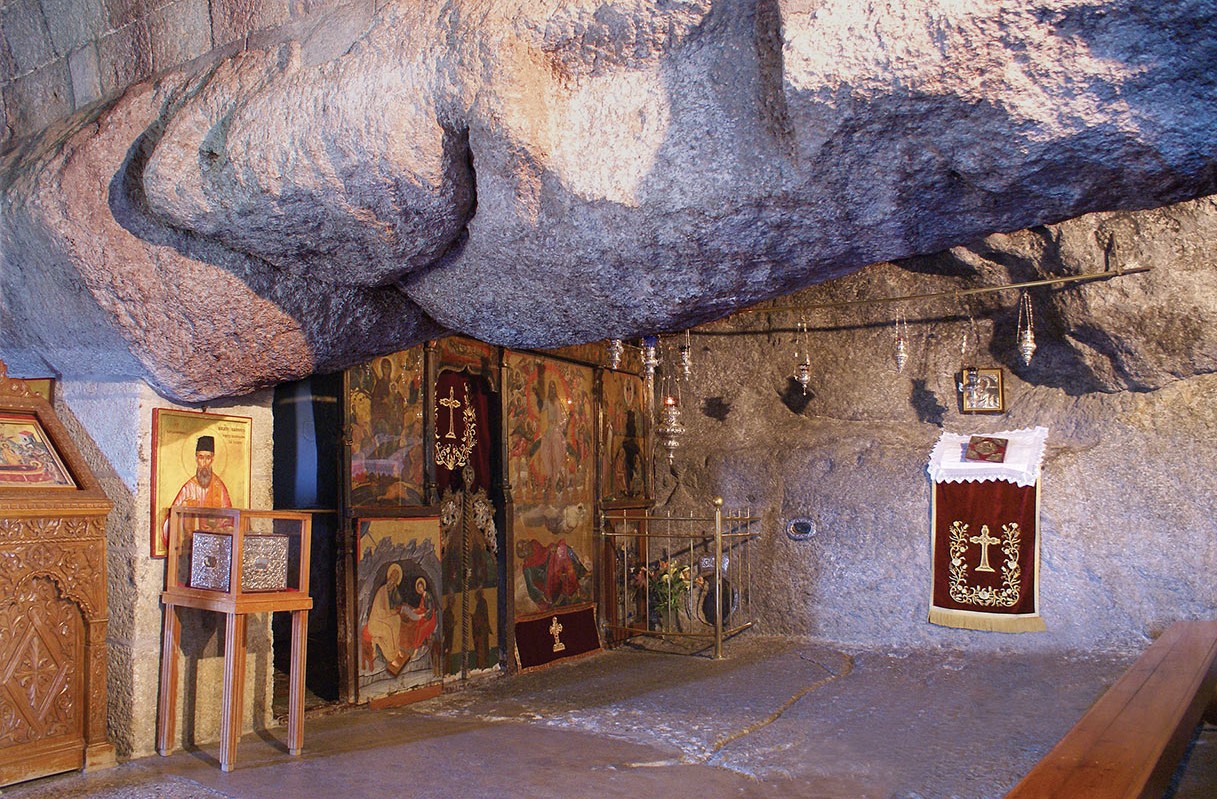6th excursion (The 4 Monasteries of Patmos) (5 – 6 hours)
The tour in brief:
Cave of the Apocalypse (1 hour)
Evaggelismos Nunnery
Monastery – Castle (2 hours)
Zoodochos Pigi Nunnery
Refreshments
The first part of the trip is the visit to the Cave of the Apocalypse, where the beloved disciple of Jesus Christ, John, was exiled in 95 AD and found refuge in a Grotto located on the hill between Skala and Chora. St. John wrote the divinely inspired book of Revelation within two years.
Today, the visitor can see the place where the Apocalypse was written, the place where St. John layed down, the huge rock that was torn when God dictated the Apocalypse, the place where the Evangelist rested his head and the spot where he was placing his hand to help himself get up.
We will head by bus to the nunnery of Evaggelismos where we can admire its gardens and the amazing view. The first church of the nunnery dates back to 1613 and is dedicated to St. Luke. The beginning of the nunnery dates back to 1937, while the collection of its icons dates back between the 15th and the 17th century.
In the third part of the tour we will visit the Monastery of St. John.
The most impressive point of the island for the visitor when he arrives in Patmos by boat is the Holy Monastery of St. John which depicts castle architecture. The monastery of St. John is imposingly located in the center of Chora and stands out with its high stone walls from the white painted capital of the island. It was built by the Orthodox monk Christodoulos in 1088.
The stone walls of the monastery end in battlements, the floor of the courtyard is paved with pebbles and inside it is surrounded by arches where one can see the frescoes that are representative samples of the Cretan school of hagiography. An important attraction of the monastery is the museum, which has exhibits of significant historical value such as chalices, crowns and etched crosses decorated with precious stones. In addition, the visitor can see icons and paintings of religious content, with the main exhibit being an authentic painting of Domenikos Theotokopoulos (El Greco). Also the library of the Monastery is one of the few monastic libraries that has remained almost intact. For various reasons, the library can only be accessed by researchers and only after the Monastery’s permission.
The last stop is the nunnery of Zoodochos Pigi. Built in 1607, its frescoes were probably painted by a Cretan workshop of hagiography, with the most important icon being the fresco of Panagia Eleousa dating to 1763.
In the last part of the excursion we will have a stop for refreshments



